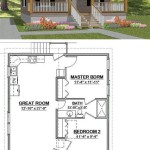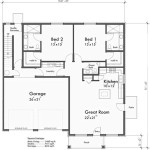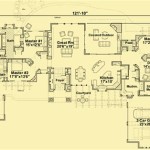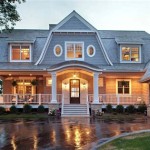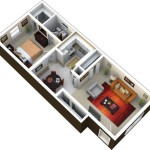A guest house plan refers to a blueprint or design that outlines the layout, structure, and features of a building intended to accommodate guests. These plans are typically created by architects or home designers and serve as a guide for the construction and furnishing of the guest house.
Guest houses offer a versatile solution for a range of needs, including providing temporary lodging for visitors, accommodating extended family members, or serving as a dedicated space for hobbies or recreational activities.
In the main body of this article, we will delve into the various considerations and elements to include in a guest house plan. We will explore essential aspects such as determining the appropriate size and layout, selecting suitable materials and fixtures, and incorporating features to ensure both comfort and privacy for your guests.
When creating a guest house plan, consider these important points:
- Determine size and layout
- Select suitable materials
- Choose appropriate fixtures
- Consider privacy and comfort
- Plan for storage and amenities
- Address accessibility needs
- Maximize natural light
- Enhance outdoor spaces
- Incorporate sustainable features
- Consider future expandability
By taking these factors into account, you can create a guest house plan that meets the specific needs and preferences of both you and your guests.
Determine size and layout
Determining the appropriate size and layout for your guest house is crucial to ensure both comfort and functionality. Consider the number of guests you typically accommodate, the duration of their stays, and the activities they may engage in. A larger guest house may be necessary if you frequently host multiple guests or plan to use the space for extended periods.
The layout should maximize space utilization and ensure a comfortable flow of movement. Create a layout that includes a dedicated sleeping area, a bathroom, and a living space. If space allows, consider adding a kitchenette or dining area for added convenience. Ample storage space is also essential to keep the guest house organized and clutter-free.
Consider the orientation of the guest house on your property. Position it to take advantage of natural light and views while ensuring privacy from the main house. Additionally, plan for adequate parking and accessibility to the guest house, especially if it is located a distance from the main residence.
Finally, think about future expandability when determining the size and layout. If you anticipate the need for additional space in the future, design the guest house with the potential for expansion in mind. This could involve incorporating unfinished attic space or designing the structure to allow for easy additions.
Select suitable materials
Selecting suitable materials for your guest house is essential to ensure durability, comfort, and aesthetic appeal. Consider the following factors when choosing materials:
Exterior materials: Choose exterior materials that are durable, weather-resistant, and require minimal maintenance. Options include fiber cement siding, brick, stone, or vinyl siding. Consider the climate of your area and select materials that can withstand the local conditions.
Roofing materials: Asphalt shingles are a popular and affordable roofing option for guest houses. However, you may also consider metal roofing, which is more durable and energy-efficient. If your guest house has a low-slope roof, consider using a flat roofing membrane.
Windows and doors: Choose energy-efficient windows and doors to minimize heat loss and gain. Vinyl or fiberglass windows are low-maintenance and durable options. For doors, consider using solid wood or a composite material that can withstand weather exposure.
Interior materials: For interior walls, drywall is a common and cost-effective option. You can also use wood paneling or beadboard for a more rustic look. For flooring, choose materials that are durable and easy to clean, such as tile, laminate, or hardwood.
Finishes and fixtures: Select finishes and fixtures that complement the overall design of your guest house. For example, if you are going for a modern look, choose sleek and contemporary finishes. If you prefer a more traditional style, opt for classic fixtures and finishes.
Choose appropriate fixtures
Selecting appropriate fixtures for your guest house is essential to ensure both functionality and aesthetic appeal. Consider the following guidelines when choosing fixtures:
Lighting fixtures
Choose lighting fixtures that provide adequate illumination while creating a warm and inviting atmosphere. Consider a combination of ambient lighting, task lighting, and accent lighting to create a layered effect. Use dimmers to adjust the brightness and ambiance as needed.
Plumbing fixtures
Select plumbing fixtures that are durable, water-efficient, and easy to clean. Consider using low-flow faucets and showerheads to conserve water. Choose a toilet that is both comfortable and efficient. For the bathroom, select fixtures that complement the overall design, such as a pedestal sink or a clawfoot tub.
Hardware fixtures
Hardware fixtures include items such as doorknobs, handles, and hinges. Choose hardware that is both functional and stylish. Consider the finish and style of the hardware to ensure it complements the overall design of the guest house.
Appliances
If your guest house includes a kitchenette or dining area, you will need to choose appropriate appliances. Consider the size and layout of the space when selecting appliances. Choose energy-efficient appliances to minimize operating costs.
By carefully selecting appropriate fixtures, you can create a guest house that is both comfortable and stylish for your guests.
Consider privacy and comfort
Create separate entrances and exits
To ensure the privacy of both your guests and your family, provide separate entrances and exits for the guest house. This will allow your guests to come and go without having to enter your main house. It will also give them a sense of independence and privacy.
Provide adequate sound insulation
Sound insulation is important to ensure that your guests can enjoy their stay in peace and quiet. Use soundproofing materials in the walls, floors, and ceiling to minimize noise transmission between the guest house and the main house. This will help to create a more relaxing and comfortable environment for your guests.
Respect guest privacy
Always respect the privacy of your guests. Knock before entering the guest house, and avoid entering without their permission. Allow them to set their own boundaries and respect their need for privacy. By doing so, you will create a more comfortable and welcoming environment for your guests.
Provide comfortable furnishings
The furnishings in your guest house should be comfortable and inviting. Choose furniture that is the right size for the space and that provides adequate support. Consider the needs of your guests and provide amenities such as comfortable beds, a cozy seating area, and a well-equipped bathroom. By providing comfortable furnishings, you will help your guests to feel at home and relaxed during their stay.
Maintain a clean and tidy guest house
A clean and tidy guest house is essential for the comfort and well-being of your guests. Make sure to clean the guest house regularly, paying attention to areas such as the bathroom, kitchen, and bedrooms. Provide fresh linens and towels for your guests, and make sure that the guest house is well-stocked with essential supplies.
Plan for storage and amenities
Providing adequate storage and amenities in your guest house is essential for the comfort and convenience of your guests. Here are some important considerations:
- Ample closet space: Provide ample closet space in the guest house for your guests to store their belongings. Consider installing closets in the bedroom and bathroom, as well as providing additional storage space in the living area or kitchenette.
- In-room amenities: Consider providing in-room amenities such as a coffee maker, mini-fridge, and microwave in the guest house. These amenities will allow your guests to prepare their own snacks and beverages, making their stay more comfortable and convenient.
- Outdoor space: If space allows, consider creating an outdoor space for your guests to enjoy. This could include a patio, deck, or garden area with seating and a barbecue grill. Providing an outdoor space will give your guests a place to relax and enjoy the fresh air.
- Laundry facilities: If your guests are staying for an extended period, consider providing laundry facilities in the guest house. This could include a washer and dryer, or access to a shared laundry room in the main house.
By planning for adequate storage and amenities, you can create a guest house that is comfortable, convenient, and welcoming for your guests.
Address accessibility needs
When planning your guest house, it is important to consider the accessibility needs of your guests. This includes guests with disabilities, seniors, and young children. By addressing accessibility needs, you can create a guest house that is welcoming and comfortable for all.
- Provide accessible entrances and exits: Make sure that the entrances and exits to the guest house are accessible to guests with disabilities. This means providing ramps or gradual slopes instead of stairs, and ensuring that doorways are wide enough for wheelchairs.
- Install grab bars and handrails: Grab bars and handrails can provide support and stability for guests with mobility issues. Install grab bars in the bathroom, near the toilet, and in the shower or tub. Install handrails along stairs and in hallways.
- Create accessible pathways: Make sure that the pathways leading to and from the guest house are accessible to guests with disabilities. This means avoiding obstacles such as steps, uneven surfaces, and narrow pathways.
- Provide accessible furnishings: Choose furnishings that are accessible to guests with disabilities. This includes chairs with armrests, beds that are high enough for guests to get in and out of easily, and tables that are wheelchair accessible.
By addressing accessibility needs, you can create a guest house that is welcoming and comfortable for all your guests. This will ensure that everyone can enjoy their stay, regardless of their abilities.
Maximize natural light
Natural light can make a guest house feel more spacious, inviting, and comfortable. It can also help to reduce energy costs by reducing the need for artificial lighting. Here are some tips for maximizing natural light in your guest house:
- Use large windows and skylights: Large windows and skylights allow more natural light to enter the guest house. Place windows and skylights strategically to take advantage of the sun’s path throughout the day.
- Choose light-colored finishes: Light-colored finishes reflect more light than dark-colored finishes. This can help to brighten up a guest house and make it feel more spacious.
- Avoid heavy window treatments: Heavy window treatments can block out natural light. Instead, opt for sheer curtains or blinds that allow light to filter through.
- Use mirrors: Mirrors can reflect natural light and make a space feel larger. Hang mirrors opposite windows or in areas with limited natural light.
By maximizing natural light in your guest house, you can create a more welcoming and comfortable space for your guests.
Enhance outdoor spaces
Creating inviting and functional outdoor spaces is essential for enhancing the overall experience of a guest house. Here are some important considerations:
Create a welcoming outdoor living area: Designate a specific area for outdoor relaxation and entertainment. This could include a patio, deck, or screened-in porch. Provide comfortable seating, such as chairs, benches, or a swing, and consider adding a fire pit or outdoor fireplace for ambiance and warmth.
Enhance privacy: Create a sense of privacy in the outdoor space by using hedges, fences, or trellises. This will allow your guests to relax and enjoy the outdoors without feeling overlooked. Consider adding curtains or screens to the outdoor living area for additional privacy and protection from the elements.
Add landscaping: Incorporate landscaping to enhance the beauty and functionality of the outdoor space. Plant trees and shrubs to provide shade and privacy. Add colorful flowers and greenery to create a vibrant and inviting atmosphere. Consider using raised garden beds or planters to grow herbs or vegetables, providing your guests with fresh produce.
By enhancing the outdoor spaces of your guest house, you can create a more welcoming and enjoyable experience for your guests. They will appreciate the opportunity to relax and connect with nature in a comfortable and private setting.
Incorporate sustainable features
Incorporating sustainable features into your guest house plan is a responsible and forward-thinking approach that can benefit both the environment and your guests. Here are some key sustainable features to consider:
Energy-efficient appliances and lighting: Choose energy-efficient appliances and lighting fixtures for your guest house. This will help to reduce energy consumption and lower operating costs. Look for appliances and lighting with Energy Star ratings to ensure that they meet certain energy efficiency standards.
Solar panels: Installing solar panels on the roof of your guest house can generate renewable energy and reduce your reliance on the grid. Solar panels convert sunlight into electricity, which can be used to power the guest house and offset energy costs.
Water-saving fixtures: Install water-saving fixtures in the bathroom and kitchen of your guest house. This includes low-flow toilets, faucets, and showerheads. Water-saving fixtures can help to reduce water consumption and lower utility bills.
Sustainable building materials: Consider using sustainable building materials when constructing your guest house. This includes materials that are recycled, renewable, or have a low environmental impact. Sustainable building materials can help to reduce the carbon footprint of your guest house and contribute to a healthier indoor environment for your guests.
By incorporating sustainable features into your guest house plan, you can create a more environmentally friendly and cost-effective space for your guests to enjoy.
Consider future expandability
When planning your guest house, consider its future expandability. This will allow you to adapt the guest house to changing needs and circumstances down the road. Here are some key points to consider:
- Design for potential additions: Plan the guest house with the potential for future additions in mind. This could involve designing the structure to allow for easy expansion, such as by incorporating unfinished attic space or by using a modular design that can be added onto in the future.
- Provide adequate space for expansion: Ensure that the guest house is situated on a lot with sufficient space for future expansion. This will give you the flexibility to add on to the guest house as needed without having to worry about space constraints.
- Consider the impact on utilities: Think about how future expansion will impact the utilities for the guest house. Make sure that the electrical, plumbing, and HVAC systems are designed to handle the increased capacity that may come with an addition.
- Plan for accessibility: If you plan on adding on to the guest house in the future, consider how you will ensure accessibility for guests with disabilities. This may involve installing ramps or elevators to make the guest house accessible to all.
By considering future expandability when planning your guest house, you can create a space that is adaptable to your changing needs and that can be enjoyed by your guests for years to come.










Related Posts

